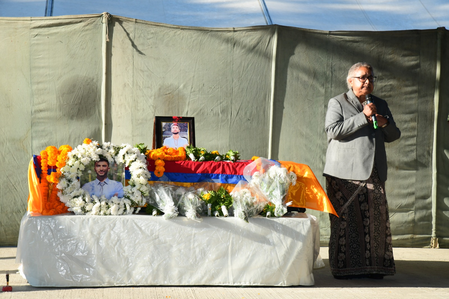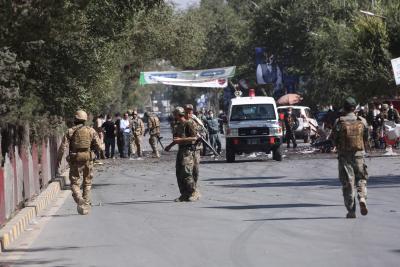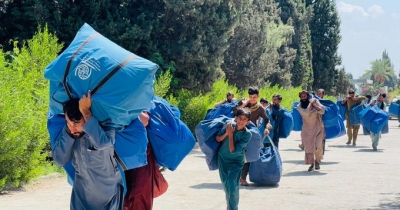
New Delhi, Sep 12 (IANS) Over the past decade and a half, the Chinese techno-authoritarian state has deeply entrenched itself in the day-to-day lives of citizens through the use of highly sophisticated surveillance technology. Two of the world’s largest manufacturers of video surveillance equipment, Hikvision and Dahua, have revolutionized the industry and exported their products to hundreds of countries worldwide.
Chinese citizens are required to use their ID when engaging in various activities, from signing up for WeChat, the ubiquitous messaging app, to using super-apps like Alipay or WeChat Pay for tasks such as public transport, online shopping, and booking movie tickets.
This extensive network allows the government to track citizens’ everyday activities and create detailed profiles, effectively establishing a Panopticon state of censorship and repression.
The most prominent feature of China’s surveillance state is its extensive network of facial recognition cameras, which are nearly ubiquitous. The Chinese government launched a programme known as Skynet in 2005, which mandated the installation of millions of cameras throughout the nation.
This initiative was further expanded in 2015 with the introduction of SharpEyes, aiming for complete video coverage of ‘key public areas’ by 2020.
The government, in collaboration with camera manufacturers such as Hikvision and Dahua, framed this as a progressive step towards developing ‘smart cities’ that would enhance disaster response, traffic management, and crime detection.
However, the technology has been predominantly employed for repressive purposes, reinforcing compliance with the Communist Party of China (CPC).
In addition to tracking alleged criminals, this surveillance network monitors citizens’ everyday activities, pre-emptively identifying potential crimes and protests while coordinating security responses.
When combined with artificial intelligence, the system triggers alerts for ‘unusual’ behaviours, such as an individual lingering too long in a railway station or residential area.
It also closely follows individuals deemed ‘suspicious’ including fraud victims or those likely to petition against the government, to prevent their assembly in Beijing.
Furthermore, the system is activated if a group of individuals with a history of political protests congregates in one location.
Although many of the ‘threats’ identified by this system may turn out to be false alarms, the omnipresent vigilance of the state ensures that even the slightest dissent from citizens is swiftly suppressed.
China has become the first known instance of a government employing artificial intelligence for racial profiling, a practice referred to as ‘automated racism’, with its extensive facial recognition technologies specifically identifying and monitoring minority groups, particularly Uyghur Muslims, who have been subjected to numerous human rights violations by the Chinese Communist Party (CCP), including mass detentions, forced labour, religious oppression, political indoctrination, forced sterilisation and abortion, as well as sexual assault; in Xinjiang, an extreme form of mass surveillance has transformed the province into a battleground, with military-grade cyber systems imposed on the civilian population, while the significant investment in policing and suppressing Uyghur Muslims has established Xinjiang as a testing ground for highly intrusive surveillance technologies that may be adopted by other authoritarian regimes, and the Chinese government has been known to collect DNA samples from Uyghur Muslims residing in Xinjiang, a move that has drawn widespread international condemnation for its unethical application of science and technology.
To protect itself from allegations of privacy violations, the Chinese government has adeptly formulated legislation that unites citizens and the state against private enterprises. Laws such as the Personal Information Protection Law and the Data Security Law, both enacted in 2021, impose stringent penalties on companies that fail to secure user consent for data collection, effectively diverting scrutiny away from the state’s own transgressions.
The COVID-19 pandemic provided the Chinese government with another opportunity to deepen its mass surveillance infrastructure, as citizens were compelled to relinquish personal information and freedoms during a time of vulnerability. The Chinese Communist Party (CCP) seized this moment to intensify its collection of citizen data, further entrenching its surveillance technologies in the process.
The extensive censorship and surveillance implemented by the Chinese government on digital platforms is widely acknowledged. For instance, following the 2020 Galwan clash between Indian and Chinese troops, Chinese blogger and former journalist Qiu Ziming expressed doubts regarding the casualty figures reported by the Chinese government on Weibo, suggesting that the actual numbers were likely higher.
As a result, he was not only arrested but also became the first individual to be criminally charged under a new law that took effect on March 1, 2021, which penalises “infringing on the reputation and honour of revolutionary heroes”, carrying a potential sentence of up to three years. In addition to these measures, the Chinese government is actively installing phone-tracking devices and collecting voiceprints from its citizens.
Despite the substantial investment in China’s mass surveillance system, it underscores the regime’s fragility and insecurity, necessitating constant public compliance. The primary concern lies in the potential export of these technologies, which could be adopted by other authoritarian leaders and even democratic nations.
The pervasive nature of surveillance not only reflects the regime’s need to monitor its citizens closely but also raises alarms about the implications for privacy and civil liberties globally. As China continues to enhance its surveillance capabilities, the risk of these technologies being misused by various governments becomes increasingly significant, threatening the political freedoms of countless individuals worldwide.
–IANS
scor/




